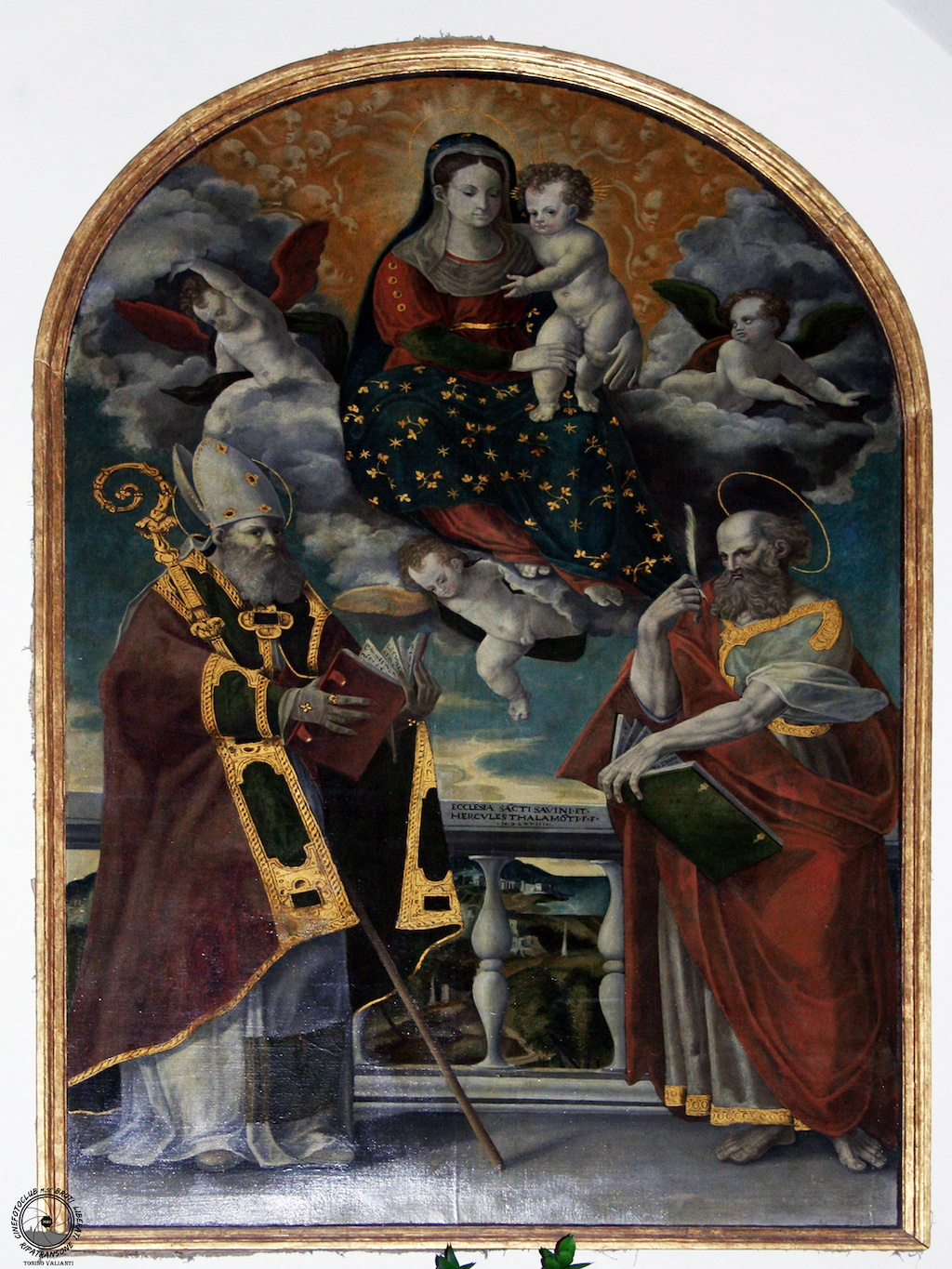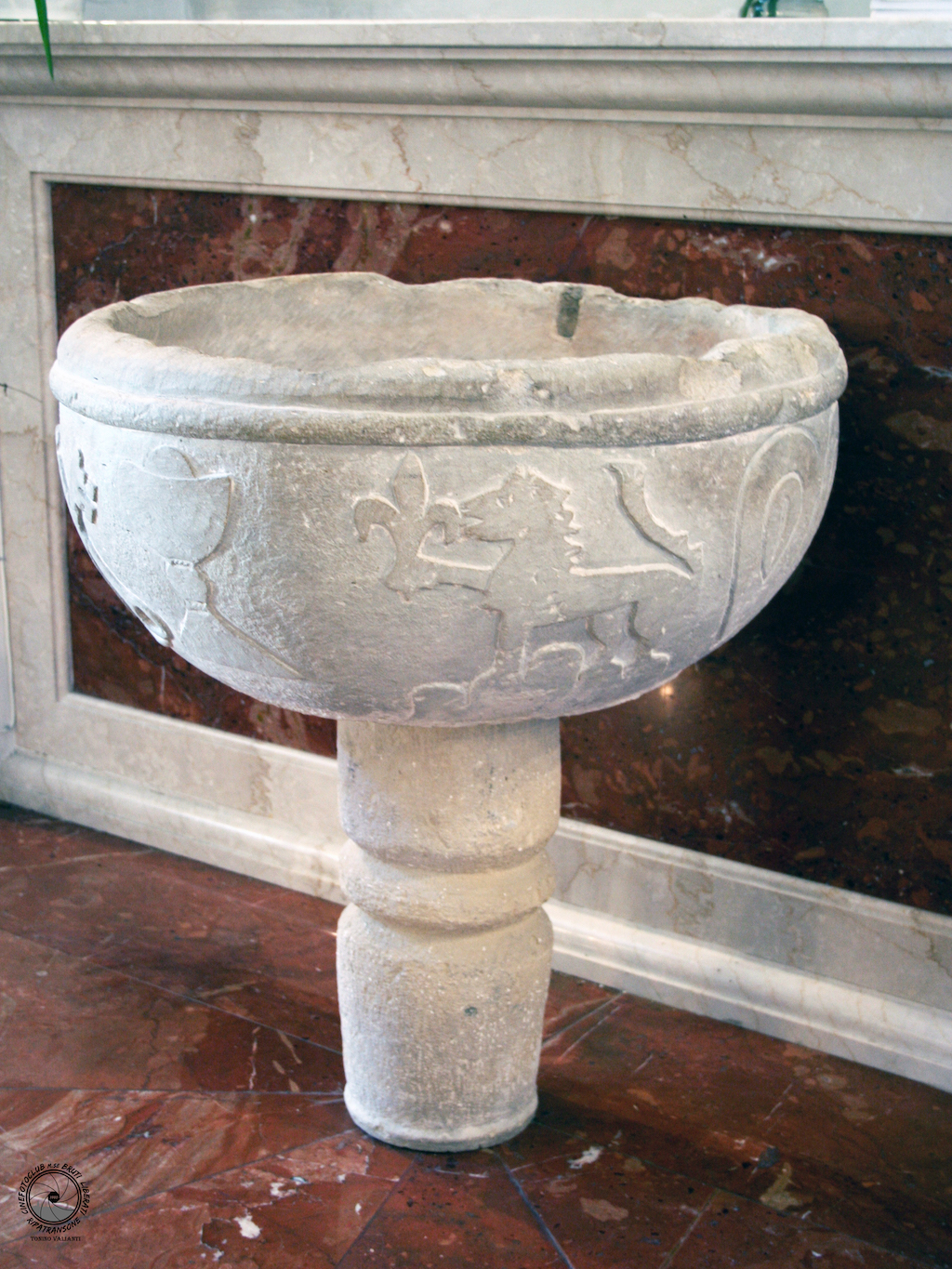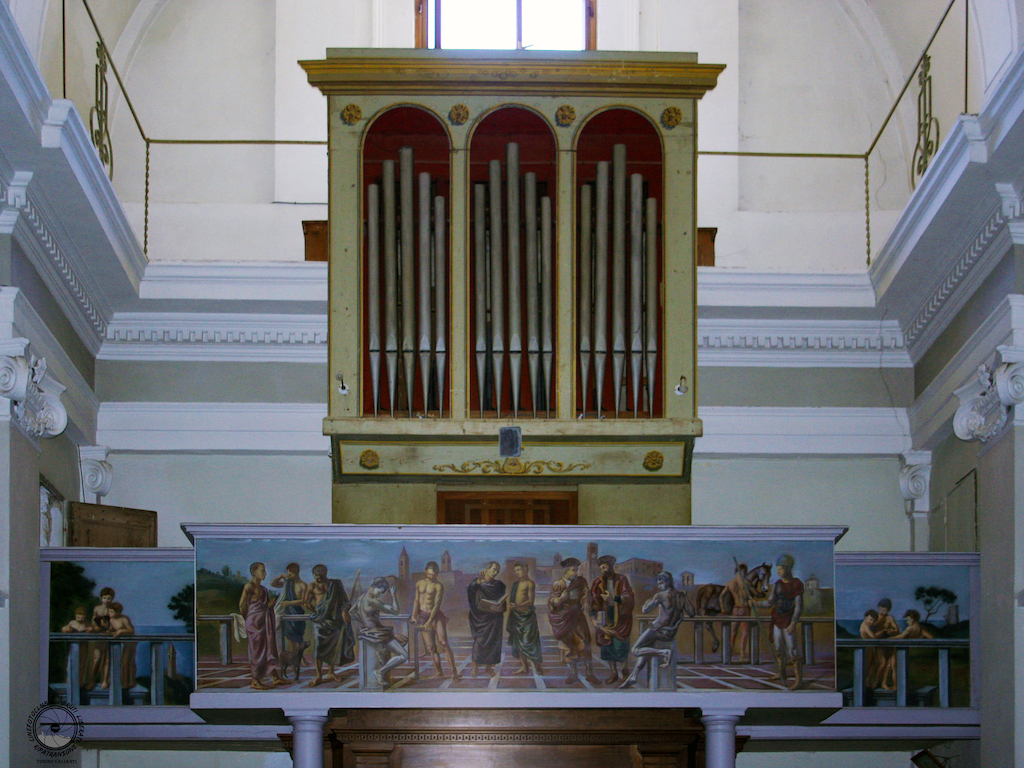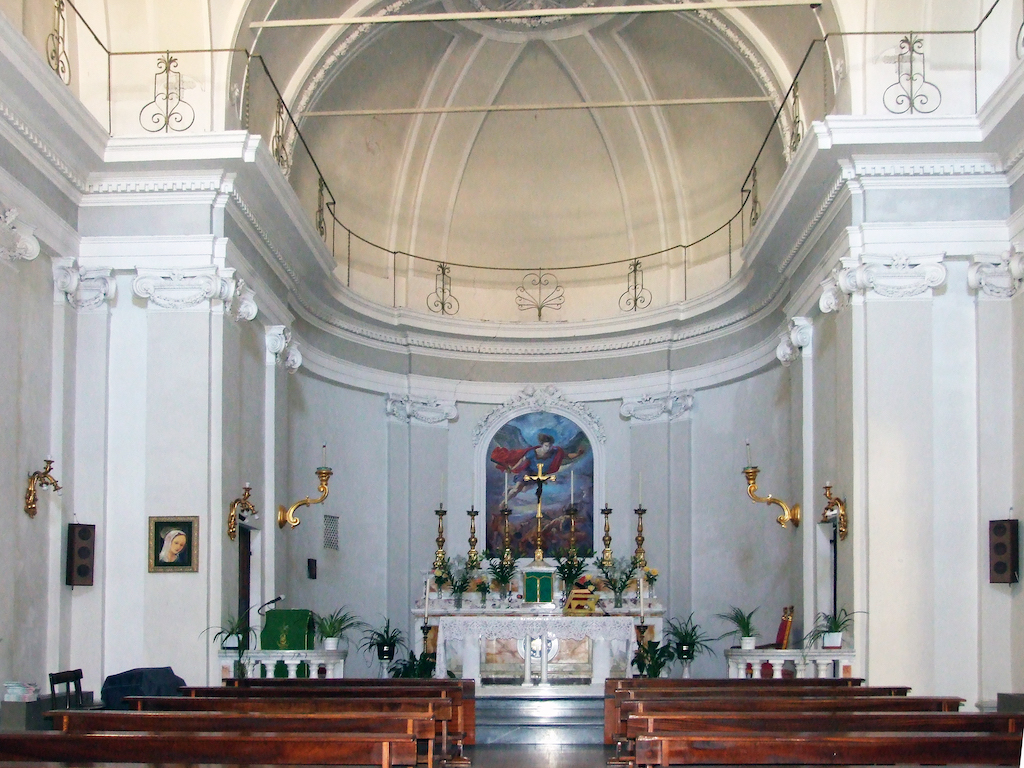La struttura architettonica più interessante prospiciente il piazzale Cellini è la Chiesa di San Michele Arcangelo detta di Sant’Angelo. Risale al XIII-XIV secolo; di questo periodo, rimane nella facciata in laterizi, il portale romanico-gotico in arenaria e pietra d’Istria, sulla cui lunetta di recente è stata collocata una terracotta policroma, busto del Cristo Crocifisso, opera di Cleto Capponi; il portale di destra di stile rinascimentale, fu fatto edificare nel 1552 da Don Antonio Spina, che fece innalzare pure su di una struttura preesistente il campanile nel 1598. L’interno fu trasformato allo stato che conserva tuttora, negli anni 1792-95 dall’architetto Giuseppe Rossetti: è ad una sola navata poco pronunciata in altezza, con piccola cupola appena accennata, abside semicircolare. La bussola all’ingresso, in rovere, con i piccoli rosoni della copertura tutti disuguali, fu realizzata nel 1977 da Claudio e Giuseppe Fazzini (fratelli del più noto Pericle). Nella parete di sinistra si possono ammirare: Madonna con il Bambino (tela del sec. XVIII con cornice a raggiera); antica acquasantiera in pietra (secoli XIV-XV, usata anche come fonte battesimale); tela del 1569 di Durante Nobili, raffigurante la Madonna con il Bambino ed i Santi Savino e Luca; al di sopra del cornicione, finestra moderna con vetri policromi (arte sacra di Cristiani, Crema). Il presbiterio fu rinnovato nel 1938-41 e negli anni ’70; la pala d’altare, San Michele Arcangelo che sprofonda nell’inferno le anime dei dannati, è stata eseguita ad Ascoli Piceno nel 1985 dal pittore Domenico Filipponi.
Dalla parete destra della chiesa dove, fra l’altro, si può ammirare la “Fuga in Egitto”, tela (1997) di Giuliano Pulcini, si accede alla Cappella del S.mo Crocifisso, dove si venera da secoli un miracoloso Simulacro vestito (opera di autore ignoto vissuto probabilmente nel sec. XVII). Edificata negli anni 1874-1900 su disegno di Giuseppe Maria Menchi, la cappella è quasi un tempietto a píanta centrale; il progetto dell’altare e la decorazione pittorica (1919) sono del ripano Don Luigi Sciocchetti. Sulla parete di destra si può ammirare un affresCo di Ugolino di Vanne di Milano, datato 1426, proveniente dalla chiesetta di Santa Maria della Petrella: rappresenta la Madonna seduta in trono, con in braccio il Bimbo che accarezza un ermellino, due Angeli che la venerano, i Santi Pietro e Paolo ai lati. Sulla parete di sinistra è un affresco quattrocentesco, originario della Chiesa: rappresenta la Madonna con il Bimbo che tiene un uccelletto, con Sant’Antonio Abate ed un altro Santo. Le 14 stazioni della Via Crucis, in scagliola patinata a bronzo, sono opera e dono di Pericle Fazzini e furono qui sistemate nel 1966. Completano il patrimonio artistico della cappella due tele di Ameide Guerrini, dipinte negli anni ’80 per ricordare i caduti (a sinistra dell’altare) ed i dispersi (a destra) della seconda guerra mondiale; altre due tele di arte devozionale di epoca barocca, raffiguranti: Sant’Antonio Abate (a destra, proviene dall’omonima ex chiesa delle Monache Domenicane); Santa Caterina da Siena che prega la Vergine per le anime purganti. Sul parapetto della cantoria nel 1985 Domenico Filipponi ha dipinto in primo piano gli antichi mestieri della città e sullo sfondo la turrita Ripatransone. L’organo liturgico è della ditta Verati di Bologna e risale i primi del ‘900. Dalla canonica si può accedere all’antica piccola cripta, con volta a crociera delineata da quattro costoloni (secoli XIII-XIV). Nel mese di ottobre del 1998 è stato revisionato il tetto della chiesa e completamente rifatta la copertura della Cappella del Crocifisso.
Chiesa di San Michele Arcangelo detta di Sant’Angeloadmin2023-05-13T20:28:59+02:00




